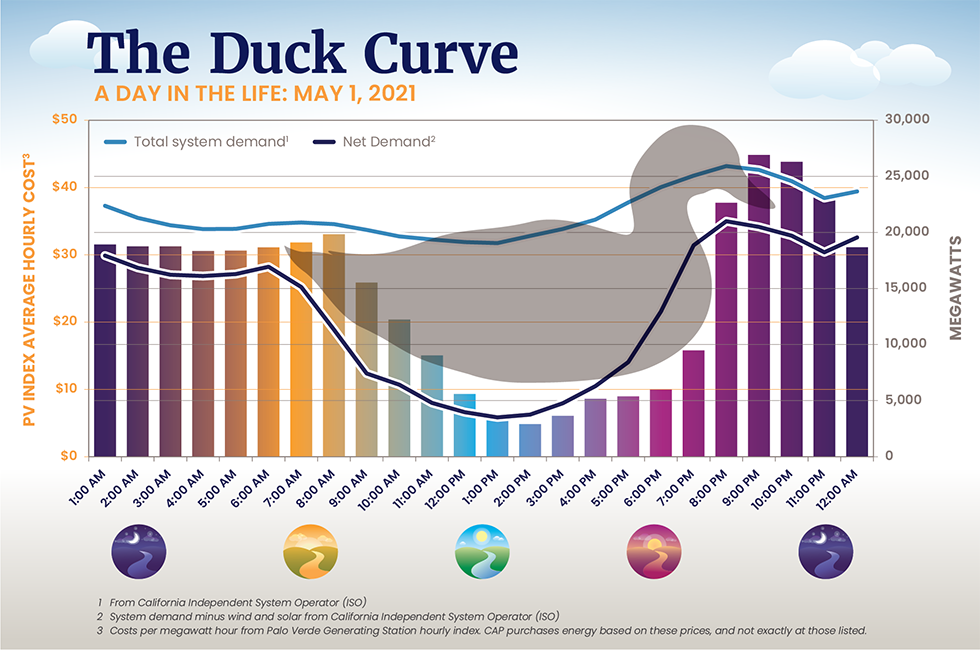By: Madison McCarthy

Synthetic turf is everywhere—from your kid’s playground to local sports fields to professional stadiums. Praised for its durability and low maintenance, it’s clear why this grass alternative has gained popularity. However, beneath the lush green surface, synthetic turf fields raise concerns about health risks, environmental impact, and a lack of regulatory oversight.
The health impacts of synthetic turf are among the most pressing issues in the debate over its regulation. Research has shown that certain materials commonly used in synthetic turf, particularly crumb rubber infill, can contain potentially harmful chemicals, including heavy metals, the “forever chemicals” known as PFAs, and volatile organic compounds (VOCs).1, 2 Studies linking these chemicals to cancer and respiratory issues have raised alarms, especially when considering that young athletes spend years playing on these fields.3, 4
In addition to health risks, synthetic turf fields pose substantial environmental concerns. Unlike natural grass, which can help mitigate urban heat, synthetic turf can exacerbate the urban heat island effect, with field temperatures sometimes exceeding 160°F on hot days.5 Furthermore, the synthetic fibers used in the turf grass blades contribute to microplastic pollution, contaminating water sources and threatening local ecosystems.6, 7 Lastly, when fields reach the end of their lifespan—usually within 8 to 10 years—the disposal of synthetic turf poses significant waste management challenges.8 The tires recycled to create these fields ultimately end up where they came from: landfills.9
Beyond the environmental damage, there are additional concerns for athletes’ safety. While great for softening athletes’ impacts, the turf’s surface has been linked to various potential health issues, from skin and respiratory irritations to increased rates of ACL injuries and concussions.10, 11, 12, 13, 14 Additionally, synthetic turf can become extremely dangerous on hot days, reaching temperatures up to 60 degrees hotter than natural grass.15, 16 This presents a considerable risk of heat stroke for athletes and children.17
Despite these risks, regulatory oversight is sorely lacking in the U.S., leading to a patchwork of state and local rules with inconsistent standards.18 Although the Environmental Protection Agency (EPA) and the Synthetic Turf Council have provided oversight regarding synthetic turf’s contents,19, 20 they have not provided comprehensive guidance detailing the long-term effects on athletes’ safety and health.21 Additionally, misinformation is being rapidly spread by turf field producers using limited inconclusive tests to gain localities’ trust.22 Companies claiming to be PFA-free have been found to be inaccurate.23 Without regulatory oversight, communities face challenges in addressing misinformation and managing synthetic turf independently.
Some states, like California and New York, have taken proactive measures, funding studies, and limiting the use of certain materials in synthetic fields.24, 25, 26, 27 As Kelly Shannon McNeil, associate director of the nonprofit Los Angeles Waterkeeper, put it, “[w]e’re looking at all of the different ways we can limit exposure to PFAS in our communities, and banning synthetic turf would be an immediate opportunity to do so.”28 New York has also taken steps to ban PFAs found in synthetic turf grass blades. A recent bill has been approved to amend the environmental conservation law to include a ban on PFAs in carpets, including “synthetic turf.”29 New bills are being introduced to eliminate the use of crumb rubber in synthetic turf fields; however, they are still in the early phases.30
Meanwhile, other states have adopted little oversight, meaning millions of players—kids and adults—are exposed to potential risks.31, 32 PEER Science Policy Director Kyla Bennett, a scientist and lawyer formerly with the U.S. Environmental Protection Agency (EPA), states that “[o]ur current embryonic state of regulation makes it difficult to trace the life cycle impacts of these highly toxic chemicals from production to disposal.”33 In other words, conducting long-term research on this subject may be difficult without federal regulation mandating that turf fields be produced similarly.
While the U.S. lags in regulatory action, other countries have taken a different approach. The European Union, for instance, will phase out crumb rubber infill prospectively, given its potential health and environmental risks, and is moving toward banning microplastics in synthetic fields altogether by 2030.34, 35, 36 Canada has also been exploring changes to address safety and environmental concerns related to synthetic turf, and several provinces have initiated studies into alternatives that could lower health risks.37
Moreover, many advocates are calling for a unified regulatory approach in the U.S. and suggest that the federal government set baseline standards to ensure nationwide safety. Proposed measures include mandating safer materials, implementing heat-mitigation guidelines, and establishing rules to hold field operators liable for injuries related to synthetic turf risks.38, 39
However, there may be another option: organic grass. Advocates are pushing to include organically maintained natural grass in discussions over synthetic turf use.40 Since synthetic turf must be replaced every 8 to 10 years, and no current recycling program exists, these fields can cause more harm than good when they end up in landfills.41, 42 States that replace the fields with organic grass instead might resolve these underlying issues.
For now, synthetic turf fields remain popular for their low maintenance and resilience, but as awareness grows, so does the call for greater accountability. Until stricter regulations or change take hold, experts advise that parents, players, and coaches exercise caution—especially on hot days—and keep pushing for transparency about the materials in their local fields.
Sources:
[1] Synthetic Turf/Recycled Tire Crumb Rubber, NAT. TOX. PROGRAM, (November 2015), https://ntp.niehs.nih.gov/whatwestudy/topics/syntheticturf.
[2] Evaluation of potential carcinogenicity of organic chemicals in synthetic turf crumb rubber, 169 ENV’T RESEARCH 163-72 (Elsevier, Feb. 2019), https://www.sciencedirect.com/science/article/abs/pii/S0013935118305528?via%3Dihub.
[3] Artificial Turf: Cancers Among Players, ENV’T. HUM. HEALTH, INC., https://www.ehhi.org/turf-cancer-stats.php.
[4] https://mountsinaiexposomics.org/artificial-turf/.
[5] Id.
[6] Mara Silgailis & Amy Goldsmith, The Turf is Artificial, But the Harm is Very Real, CLEAN WATER ACTION (Sept. 2024), https://cleanwater.org/2024/09/16/turf-artificial-harm-very-real.
[7] Dangerous Play: Studies find harmful ‘forever chemicals’ in artificial turf fields, PENNENV’T RSCH. POL’Y CENTER (March 2024), https://environmentamerica.org/pennsylvania/center/updates/dangerous-play-studies-find-harmful-forever-chemicals-in-artificial-turf-fields/#:~:text=Sadly%20the%20problems%20with%20synthetic,acute%20mortality%20in%20coho%20salmon.
[8] Candy Woodall, ‘Running out of room’: How old turf fields raise potential environmental, health concerns, YORK DAILY RECORD (Nov. 18, 2019), https://www.ydr.com/in-depth/news/2019/11/18/old-artificial-turf-fields-pose-huge-waste-problem-environmental-concerns-across-nation/2314353001/.
[9] Kathryn Dressendorfer, Artificial Turf: Why we shouldn’t choose plastic over plants, SURFRIDER FOUND., (July 4, 2023), https://www.surfrider.org/news/artificial-turf-why-we-shouldnt-choose-plastic-over-plants.
[10] Katerina Kerska, Injuries Related to Artificial Turf, NAT’L CENTER FOR HEALTH RSCH., https://www.center4research.org/injuries-related-to-artificial-turf/.
[11] Artificial Turf Health Risks, INST. FOR CLIMATE CHANGE, ENV’T HEALTH, AND EXPOSOMICS (July 2024), https://mountsinaiexposomics.org/artificial-turf/.
[12] Corey Grunberg, Turf Leads to More ACL Injuries: Fact or Fiction?, CUROVATE (Jan. 21, 2021), https://curovate.com/blog/turf-leads-to-more-acl-injuries-fact-or-fiction/.
[13] Mark Cote, Turf vs. Grass Injuries: What Athletes Need to Know, MASS. GEN. BRIGHAM (Jan. 30, 2024), https://www.massgeneralbrigham.org/en/about/newsroom/articles/turf-vs-grass-fields-sports-injury-prevention.
[14] Are ACL Tears More Common on Grass or Synthetic Turf?, MODERN TURF https://modernturf.com/are-acl-tears-more-common-on-grass-or-synthetic-turf/.
[15] Natural grass vs artificial turf: Everything sports organizations need to know about player safety, injury risk and, and legal implications, CAPILLARY FLOW (Sept. 13, 2023), https://www.capillaryflow.com/reports/examining-the-turf-safety-injuries-and-legal-implications-in-the-debate-between-natural-grass-and-artificial-turf-for-sports-surfaces.
[16] Health Impacts of Synthetic Turf, VIRGINIA DEP’T HEALTH (July 31, 2024), https://www.vdh.virginia.gov/environmental-health/public-health-toxicology/health-impacts-of-synthetic-turf/#:~:text=Heat%20Illnesses,fields%20can%20reduce%20temperatures%20temporarily.
[17] Katerina Kerska, Injuries Related to Artificial Turf, NAT’L CENTER HEALTH RSCH., https://www.center4research.org/injuries-related-to-artificial-turf/#:~:text=our%20article%20here.-,Heat%2DRelated%20Illness%20and%20Injury,turf%20field%20got%20much%20hotter.&text=For%20example%2C%20on%20a%2090,when%20it%20gets%20this%20hot.
[18] Philip Zuccaro, David C. Thompson, Jacob de Boer, Andrew Watterson, Qiong Wang, Song Tang, Xiaoming Shi, Maria Llompart, Nuno Ratola & Vasilis Vasiliou, Artificial turf and crumb rubber infill: An international policy review concerning the current state of regulations, 9 ENV’T CHALLENGES 100620 (Dec. 2022), https://doi.org/10.1016/j.envc.2022.100620.
[19] Synthetic Turf Field Tire Crumb Rubber And Exposure Characterization Research Under The Federal Research Action Plan, Response to Comments from External Peer Reviewers, U.S. ENV’T PROT. AGENCY (April 2024), https://www.epa.gov/system/files/documents/2024-04/epa-atsdr-tire-crumb-study-response-to-external-peer-review-comments.pdf.
[20] Synthetic Turf Council, https://www.syntheticturfcouncil.org/.
[21] Position Statement on the Use of Artificial Turf Surfaces, INST. FOR CLIMATE CHANGE, ENV’T HEALTH, AND EXPOSOMICS (July 5, 2024), https://mountsinaiexposomics.org/position-statement-on-the-use-of-artificial-turf-surfaces/.
[22] Industry Misinformation, SAFE HEALTHY PLAYING FIELDS, https://www.safehealthyplayingfields.org/industry-misinformation.
[23] Sue Chow, Artificial Turf Wars: People Fighting to Protect Their Communities, SIERRA CLUB, (May 30, 2024), https://www.sierraclub.org/loma-prieta/blog/2024/05/artificial-turf-wars-people-fighting-protect-their-communities.
[24] Shreya Agrawal, Once it was hailed as a drought fix — but now California’s moving to restrict synthetic turf over health concerns, CALMATTERS, (Oct. 23, 2023), https://calmatters.org/environment/2023/10/california-synthetic-turf-pfas/ (last visited Nov. 10, 2024).
[25] Synthetic Turf Studies, CAL. OFF. ENV’T HEALTH HAZARD ASSESS., https://oehha.ca.gov/risk-assessment/synthetic-turf-studies.
[26] B. Sakura Cannestra, Santa Clara County to study ban on artificial turf, SAN JOSÉ SPOTLIGHT (Apr. 17, 2024), https://sanjosespotlight.com/santa-clara-county-to-study-ban-on-artificial-turf-athletics-sports-fields-grass/.
[27] Mark Patton, Coastal Commission Denies UCSB’s Project for Artificial Turf at Uyesaka Stadium, NOOZHAWK (Dec. 14, 2023), https://www.noozhawk.com/coastal-commission-denies-ucsbs-project-for-artificial-turf-at-uyesaka-stadium/.
[28] Delilah Brumer, LA City Council committee seeks study of possible ban on artificial turf, LOS ANGELES DAILY NEWS (July 11, 2024), https://www.dailynews.com/2024/07/11/la-city-council-committee-seeks-study-of-possible-ban-on-artificial-turf/ (last visited Nov. 10, 2024).
[29] New York Governor Signs PFAS Bans in Apparel and Carpet, BUREAU VERITAS (Jan. 10, 2023), https://www.cps.bureauveritas.com/newsroom/new-york-governor-signs-pfas-bans-apparel-and-carpet.
[30] S. 7239, 2023 Gen. Assemb., Reg. Sess. (N.Y. 2023), https://www.nysenate.gov/legislation/bills/2023/S7239 (temporarily suspending the installation of synthetic turf products that contain crumb rubber).
[31] Liz George, Council Calls for Time to Consider Three-Year Moratorium on Artificial Turf Installation, MONTCLAIR LOCAL, (Oct. 9, 2024), https://montclairlocal.news/2024/10/council-calls-for-time-to-consider-three-year-moratorium-on-artificial-turf-installation/.
[32] Maura Keene, PFAS Legislation Proliferates Across The Nation, AMHERST INDY (Feb. 3, 2023), https://www.amherstindy.org/2023/02/03/pfas-legislation-proliferates-across-the-nation/.
[33] Kyla Bennett, PFAS in Artificial Turf Coats Players’ Skin, PEER, (Mar. 12, 2024), https://peer.org/pfas-in-artificial-turf-coats-players-skin/.
[34] Philip Zuccaro, David C. Thompson, Jacob de Boer, Andrew Watterson, Qiong Wang, Song Tang, Xiaoming Shi, Maria Llompart, Nuno Ratola & Vasilis Vasiliou, Artificial turf and crumb rubber infill: An international policy review concerning the current state of regulations, 9 ENV’T CHALLENGES 100620 (Elsevier, Dec. 2022), https://www.sciencedirect.com/science/article/pii/S2667010022001767.
[35] P. Zuccaro, et al., The European Union Ban on Microplastics Includes Artificial Turf Crumb Rubber Infill: Other Nations Should Follow Suit, 58 ENV’T SCI. TECH. 2591-94 (2024), https://doi.org/10.1021/acs.est.4c00047.
[36] Granules and mulches on sports pitches and playgrounds, EUR. CHEM. AGENCY https://echa.europa.eu/hot-topics/granules-mulches-on-pitches-playgrounds (follow “What is the EU doing?” hyperlink).
[37] Supra note 33.
[38] Tamela Trussell, Are Synthetic Playing Surfaces Doing More Harm Than Good?, SIERRA CLUB (May 20, 2023), https://www.sierraclub.org/pennsylvania/blog/2023/05/are-synthetic-playing-surfaces-doing-more-harm-good.
[39] Federal Action – EPA & CPSC, SAFE HEALTHY PLAYING FIELDS, https://www.safehealthyplayingfields.org/recent-action-federal.
[40] Synthetic Turf Fields, Forever Chemicals and the Safer Alternative: Organic Grass, BEYOND PESTICIDES (Mar. 27, 2024), https://beyondpesticides.org/dailynewsblog/2024/03/synthetic-turf-fields-forever-chemicals-and-the-safer-alternative-organic-grass/.
[41] Rebekah Thomson, Synthetic Turf Fact Sheet, MARTHA’S VINEYARD COMM’N (Sep. 2016), https://www.mvcommission.org/sites/default/files/docs/DR%201%202016%20HS%20Athletic%20Fileds%20Correspondence%20R%20Thomson%202016-09-06%202.pdf.
[42] “40,000 lbs in the average athletic field often end up in landfills when its lifespan runs out.” Carmela Guaglianone, As the world heats up, so does the debate around artificial turf, THE NEW LEDE (Aug. 20, 2024), https://www.thenewlede.org/2024/08/as-the-world-heats-up-so-does-the-debate-around-artificial-turf/.




